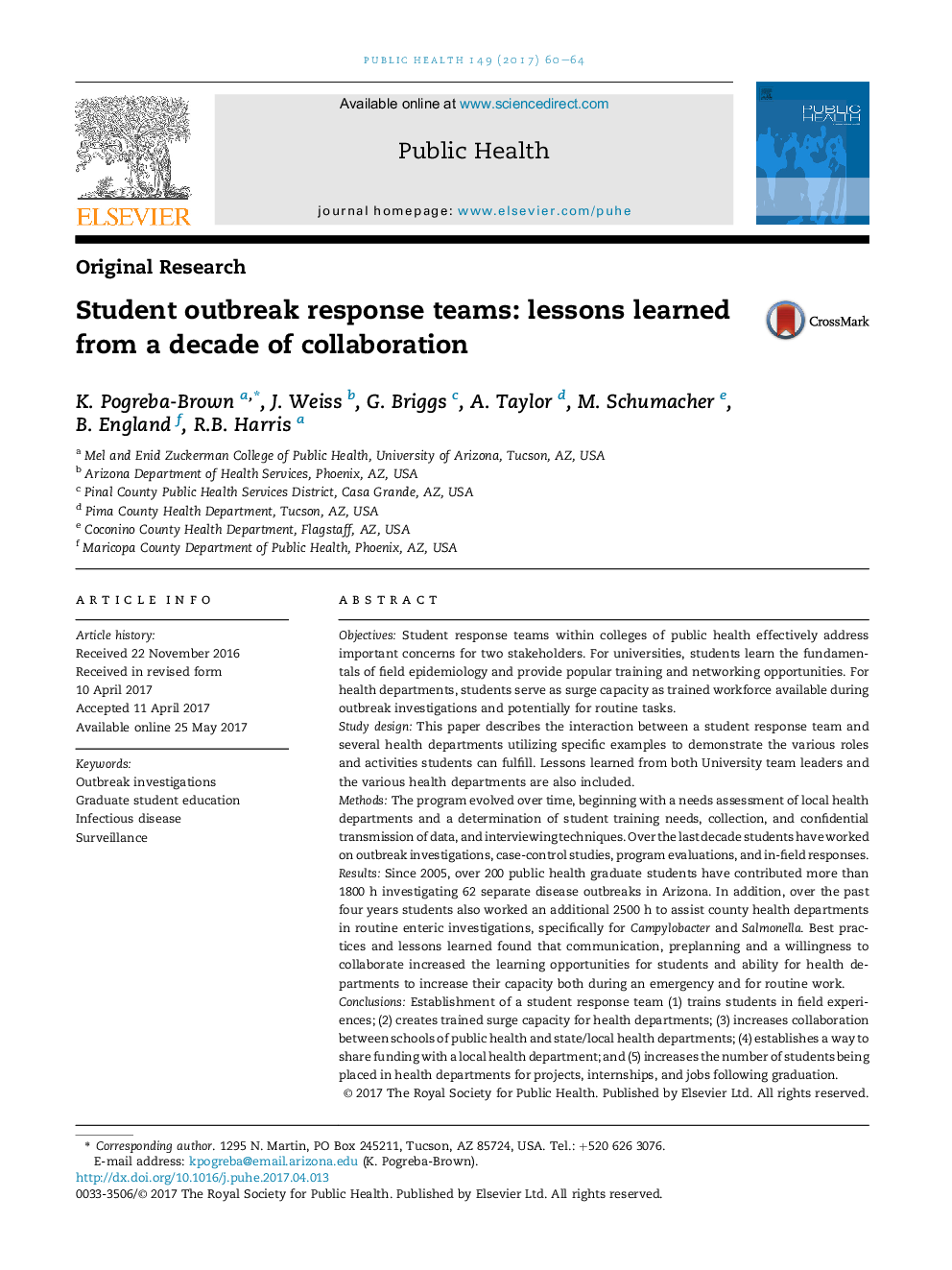| کد مقاله | کد نشریه | سال انتشار | مقاله انگلیسی | نسخه تمام متن |
|---|---|---|---|---|
| 5122869 | 1487194 | 2017 | 5 صفحه PDF | دانلود رایگان |
- Benefits include engaging learning, surge capacity, and professional development.
- Lessons learned and a set of examples can be used as a roadmap for other programs.
- Various activities beyond outbreaks demonstrate other ways to utilize students.
- Relationships necessary for effective teams can lead to other key collaborations.
ObjectivesStudent response teams within colleges of public health effectively address important concerns for two stakeholders. For universities, students learn the fundamentals of field epidemiology and provide popular training and networking opportunities. For health departments, students serve as surge capacity as trained workforce available during outbreak investigations and potentially for routine tasks.Study designThis paper describes the interaction between a student response team and several health departments utilizing specific examples to demonstrate the various roles and activities students can fulfill. Lessons learned from both University team leaders and the various health departments are also included.MethodsThe program evolved over time, beginning with a needs assessment of local health departments and a determination of student training needs, collection, and confidential transmission of data, and interviewing techniques. Over the last decade students have worked on outbreak investigations, case-control studies, program evaluations, and in-field responses.ResultsSince 2005, over 200 public health graduate students have contributed more than 1800Â h investigating 62 separate disease outbreaks in Arizona. In addition, over the past four years students also worked an additional 2500Â h to assist county health departments in routine enteric investigations, specifically for Campylobacter and Salmonella. Best practices and lessons learned found that communication, preplanning and a willingness to collaborate increased the learning opportunities for students and ability for health departments to increase their capacity both during an emergency and for routine work.ConclusionsEstablishment of a student response team (1) trains students in field experiences; (2) creates trained surge capacity for health departments; (3) increases collaboration between schools of public health and state/local health departments; (4) establishes a way to share funding with a local health department; and (5) increases the number of students being placed in health departments for projects, internships, and jobs following graduation.
Journal: Public Health - Volume 149, August 2017, Pages 60-64
